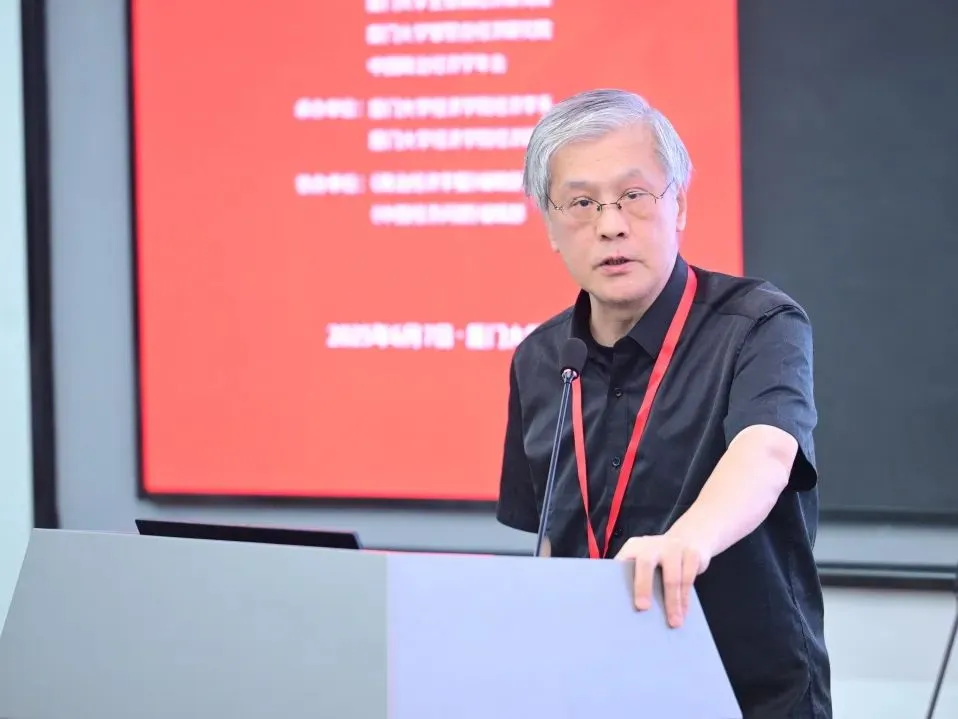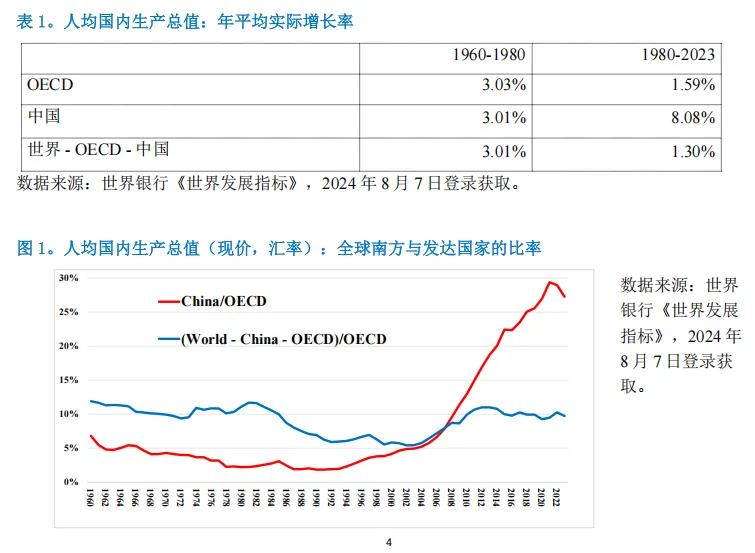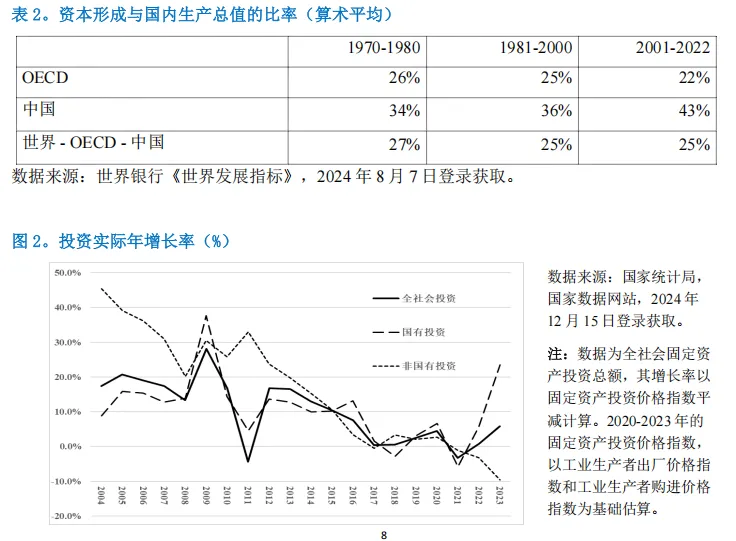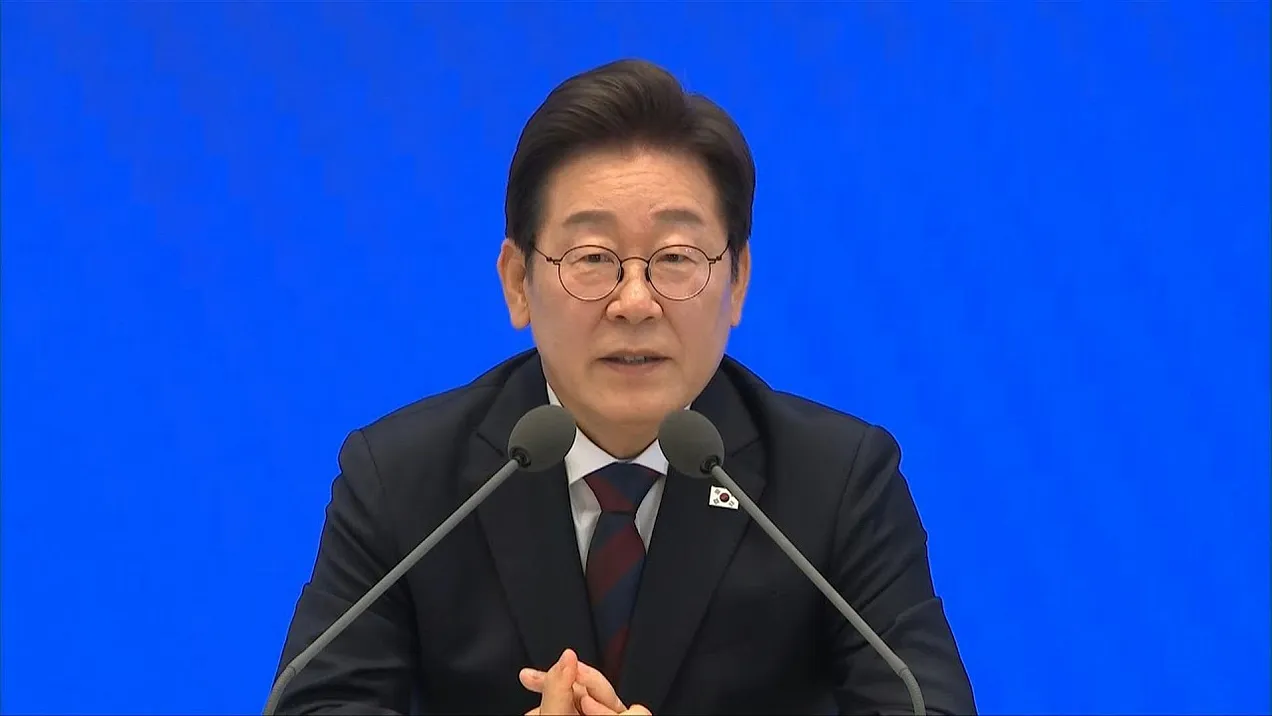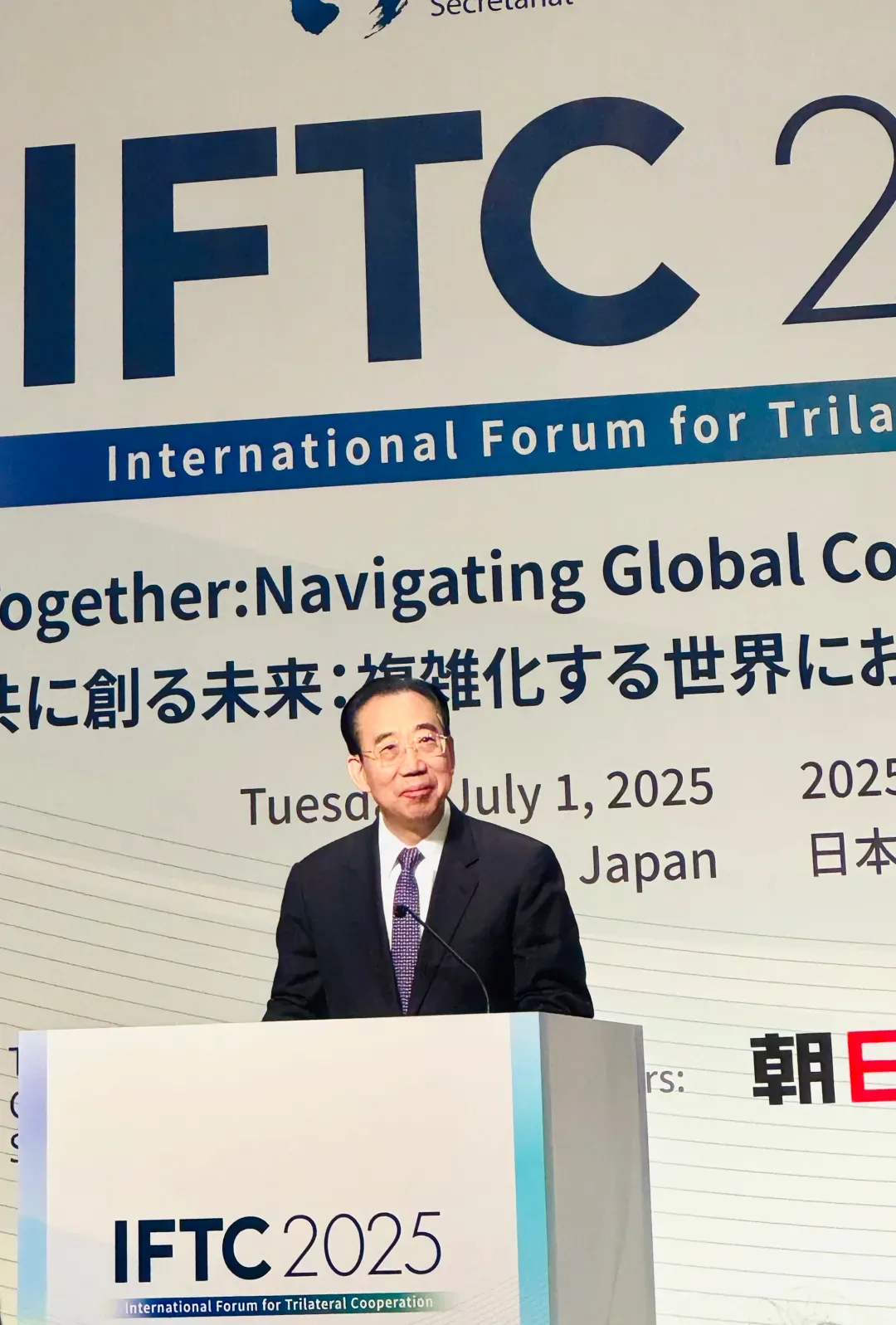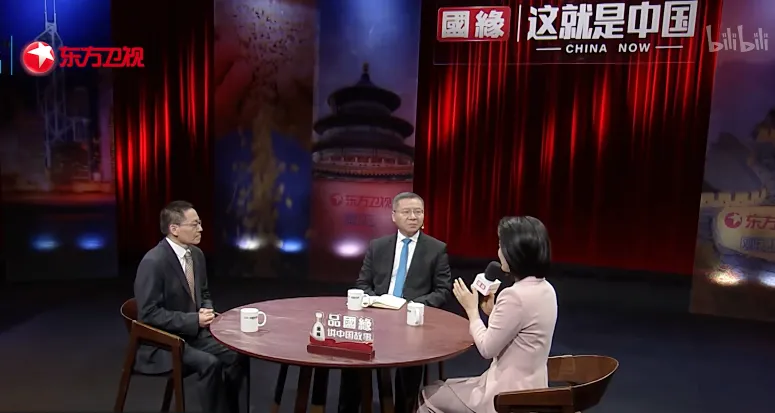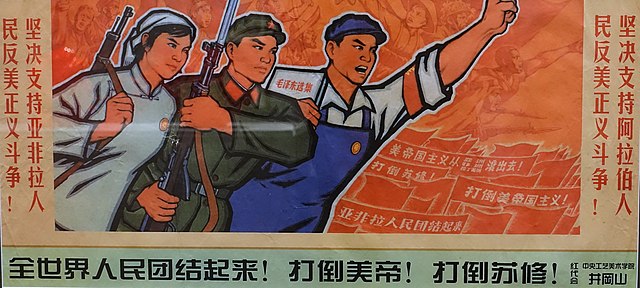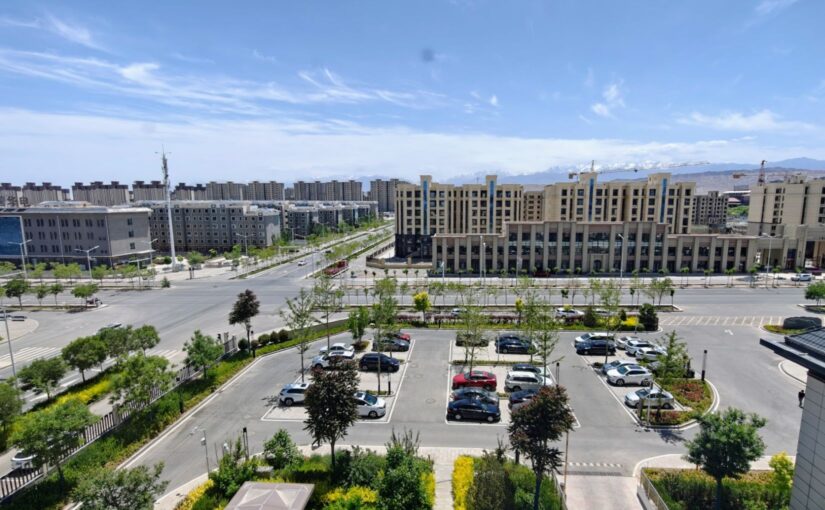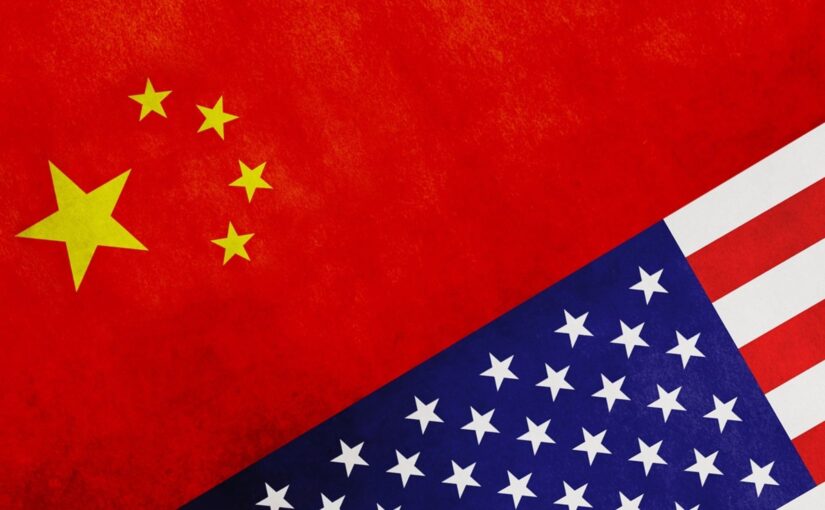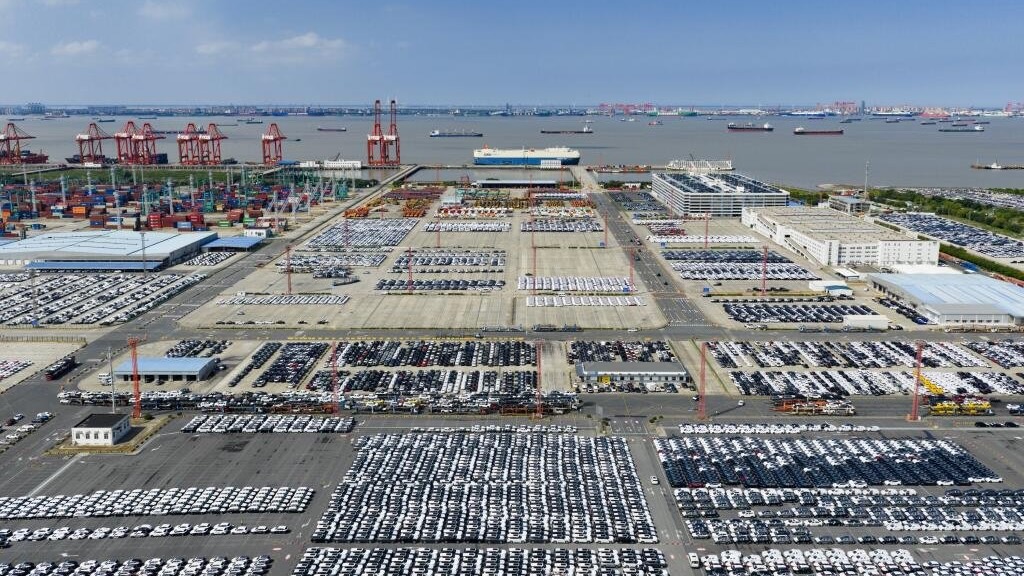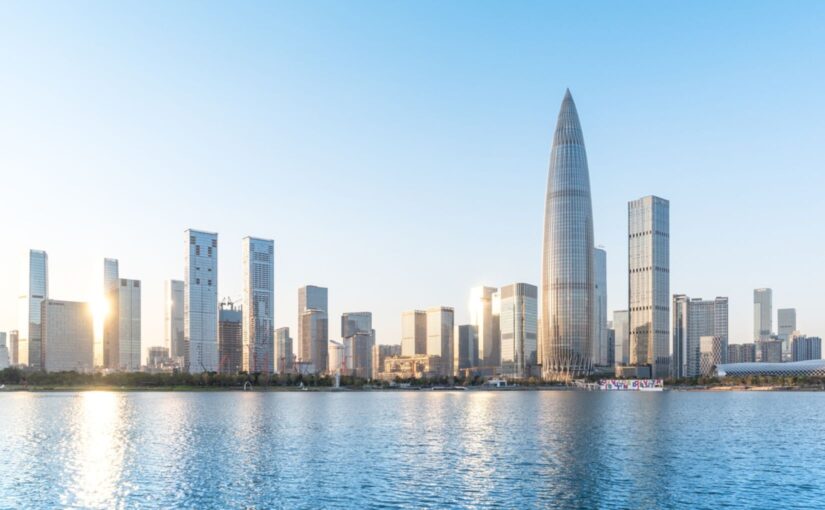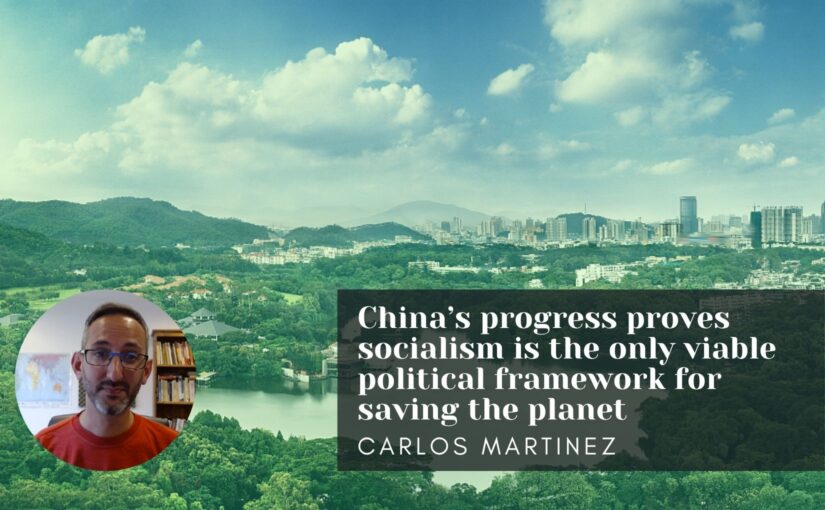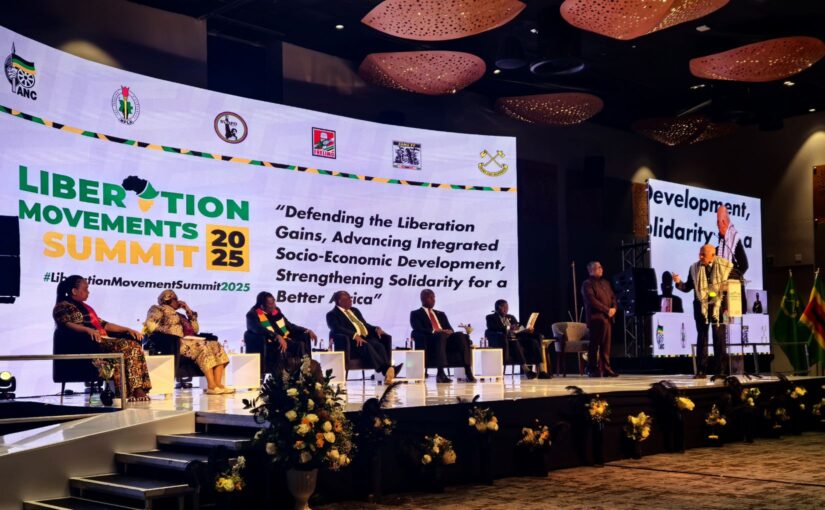 Communist Party of China joins Liberation Movements Summit in South Africa
Communist Party of China joins Liberation Movements Summit in South Africa
The Communist Party of China (CPC) joined the Liberation Movements Summit that was hosted by the African National Congress (ANC) of South Africa in Johannesburg, between July 25-28, under the theme, ‘Defending the Liberation Gains, Advancing Integrated Socio-Economic Development, Strengthening Solidarity for a Better Africa.’
Besides the ANC, the core participants were the five other main liberation movements in the region – the Popular Liberation Movement of Angola (MPLA), the South West Africa People’s Organisation (SWAPO) of Namibia, the Mozambique Liberation Front (FRELIMO), the Zimbabwe African National Union – Patriotic Front (ZANU-PF) and the Chama Cha Mapinduzi (Revolutionary Party of Tanzania – CCM).
In a statement, the ANC said: “This critical gathering reaffirms the ideological foundations of the six Southern African liberation movements… and their historical role in securing independence, dignity and development across the region. It also seeks to reassert the relevance of these movements in a rapidly shifting global order.
“Southern Africa’s liberation movements transformed the region’s political landscape, resisting colonial rule and apartheid, and ushering in people-centred governance. Since independence, these movements have implemented landmark policies on land reform, education, housing, infrastructure and social protection.
“However, these gains now face erosion due to renewed imperial pressures, economic crises, and attempts at neo-colonial interference. The Summit provides a united platform to confront these threats and consolidate progressive regional responses grounded in Pan-Africanism, internationalism and multilateralism.
“The Summit is a strategic intervention in organisational renewal, deepening intra-party solidarity, and realignment of liberation movements with the socio-economic aspirations of a new generation. The ANC believes that the political, economic and cultural survival of Southern Africa’s liberation legacy demands honest introspection, shared learning and actionable unity.
“The Summit will advance frameworks for inter-party collaboration, regional integration, youth engagement, and sovereign resource governance. Through reaffirming shared values and strengthening alliances, the 2025 Liberation Movements Summit will chart a path forward, one that protects the gains of the past while building a just, inclusive and self-determined African future.”
Further details of the conference perspectives may be read here.
Besides these six movements, the POLISARIO Front of the Sahrawi Arab Democratic Republic (SADR) and the Palestinian National Liberation Movement Fatah were also represented at a senior level, along with the South African Communist Party (SACP), Pan-Africanist Congress (PAC) of Azania, the Congress of South African Trade Unions (COSATU) and the South African National Civics Organisation (SANCO).
The Communist Party of China was represented by Liu Jianchao, Minister of the International Department of the Party Central Committee (IDCPC).
Among other parties represented were United Russia, the Communist Party of Cuba, the National Liberation Front (FLN) of Algeria, the Sandinista National Liberation Front (FSLN) of Nicaragua, the Botswana National Front (BNF – the main component of the progressive ruling Umbrella for Democratic Change coalition), and the Botswana Democratic Party, while messages of greetings included that from the Communist Party of the Russian Federation.
In his keynote address, Cyril Ramaphosa, President of the ANC and of the Republic of South Africa, said:
“Together our movements were forged in the cauldrons of anti-apartheid and anti-colonial struggle. Today, together, we must be forged anew in the fire of a new struggle. The struggle for social and economic justice for our people, regional unity, integration and sovereignty in an increasingly hostile global order.
“We gather this year on the 64th anniversary of the independence of Tanzania, the 50th anniversary of the independence of Angola and Mozambique, the 45th anniversary of the independence of Zimbabwe, and the 35th anniversary of the independence of Namibia. It is a moment not just for celebration, but it is also a moment for critical reflection. We must honour the memories of our founding giants Julius Nyerere, Eduardo Mondlane, Samora Machel, Agostinho Neto, Sam Nujoma, Robert Mugabe, Joshua Nkomo, Kenneth Kaunda, Oliver Tambo, Nelson Mandela, and many others.
“Their vision, courage, boldness, bravery, as well as sacrifice laid the foundations of a free Southern Africa that we live in today. We remember with deep reverence the recently departed comrade Sam Nujoma and comrade Hage Geingob of Namibia, stalwarts of SWAPO, and lifelong warriors for justice, equality, and dignity. We also here in South Africa remember the recently departed David Dabede Mabuza, former President of the Republic of South Africa, and the African National Congress.”
In a consistent theme of the conference, representing the serious and self-critical approach increasingly being taken by the participating parties, he added:
“Most of our movements are having to contend with declining electoral support, shifting demographics, frustrated young people in our various countries, economic inequality, and foreign interference. These trends speak to a deeper crisis, the disconnect between our founding narratives and the lived realities of a new generation of young people. It is a generation that sees and appreciates less of our past victories and more of our present shortcomings.
“It is a generation that demands jobs, justice, dignity, housing, education, health, and security, and sees our movements as distant, rigid, and slow to adapt. This disconnect amongst the population emboldens the external attacks on our sovereignty, our independence, development, and security. In fact, there has been ample evidence that international actors use the legitimate grievances of our people to attack progressive governments.”
In another pressing and topical reference, he stated: “Although the African continent is not responsible for the warming of the planet, it is most vulnerable to its effect. That is neither just nor is it sustainable. Countries in the Global North developed on the back of Africa’s human capital, on the back of Africa’s natural resources, and cultural destruction.
“The price has been centuries of extraction, exploitation, and underdevelopment whose effects are still felt up to today. As Walter Rodney argued in ‘How Europe Underdeveloped Africa’, Europe was developed by means of the same underdevelopment of Africa. To meet present-day challenges, we require urgent, substantial, and sustainable solutions to Africa’s challenges…
“We must recognise that our political independence is incomplete without economic justice. It is incomplete without resolving the question of land. It is incomplete unless we industrialise, we beneficiate the minerals that are extracted from our land, and we create jobs for our youth.”
Referencing the internationalism that has always characterised the region’s liberation movements, he stated: “We must reject xenophobia in all its forms. Migration itself must not be seen as a threat. It is a consequence of underdevelopment, war, global inequality, not a moral failing of those who move in search of hope.
“As liberation movements, we must advocate for people-centred regional migration policies that affirm dignity, rights, and solidarity as well. We must never forget our freedom struggles were international in nature. Our freedom was achieved not only by the tireless struggles of our peoples but by the efforts of people from across the world.
“Drawing on that experience, we reaffirm our support for the peoples of Palestine, Western Sahara, and Cuba. We condemn in the strongest terms the crimes against humanity and the genocide committed by the apartheid state of Israel against the people of Palestine. We are particularly horrified by the deliberate starvation of the people of Gaza.
“We call on the state of Israel to allow food and essential aid to be allowed in and to be distributed amongst the starving Palestinians. We call for an immediate end to the relentless bombardment of civilians and the destruction of their homes, their hospitals, their places of worship. We call on the world to stop the murder of children and babies through starvation.
“Our position remains very clear. Liberation is indivisible. We are not truly free until all are free…
“We should champion the vision of a multipolar, multicultural, equitable, inclusive, and a just world order. We should demand reform of the political and economic global governance institutions and the end of unilateral sanctions and the creation of a just global governance system rooted in dignity and in fairness. Working with like-minded forces across the world, we must be the architects of the new world order that we seek.”
He concluded: “We need to reaffirm that there shall be peace and friendship, that there shall be houses and security and comfort for all as set out in our freedom charter adopted in 1955, 70 years ago here in South Africa. Let us not only defend the gains of liberation. We should build on what we have achieved, and we have achieved a great deal even as our detractors seek to downplay the achievements that were brought about by our liberation movements.
“Let us realise the hopes and the aspirations of our people as we move together in unison as liberation movements, seeking to achieve the objectives that were set out by our forebears when they established our movements to attain our independence and our freedom against apartheid and against colonialism. This is the hour and the moment that we need to regain our strength and move forward, renewed and reinvigorated.”
Introduced by ANC Secretary-General Fikile Mbalula, Comrade Liu Jianchao addressed the summit on its third day.
After extending the greetings and best wishes from General Secretary Xi Jinping and the 100 million CPC members, he said:
“Your forefathers led the brave and resilient African people out of the long dark night of colonialism and achieved national liberation. 31 years ago in 1994, as a UN observer, I had the privilege of witnessing the first non-racial democratic election in South Africa.
“After independence, leaders across African countries focused on achieving economic liberation and the revival of civilisations, taking yet another step towards modernisation. We are heartened to see that the once forgotten continent of Africa has transformed into a land of vitality and robust growth, becoming an important political, economic, and cultural pole of the world. As Comrade Nelson Mandela put it, we stand at the dawn of an African century.
“China has travelled a long and difficult path towards modernisation. Under the CPC’s leadership, what was once an impoverished agriculture nation has now become the second largest economy in the world. To realise modernisation, it is essential to have a strong political leadership able to lead and unite.
“There must be a correct direction, sensible goals, and the hard work of the entire people. China’s modernisation would not have been possible without the strong leadership of the Communist Party of China. The long-term governance of the CPC keeps Chinese modernisation on track, avoiding policy fluctuations and flip-flops.
“Under the CPC’s leadership, generations of the Chinese people have forged ahead, turning the grand blueprint into reality. To realise modernisation, it is essential to continuously meet people’s aspirations for a better life. The ultimate goal of modernisation is the free and well-rounded development of the individual.
“China will support Africa in cultivating the drivers of modernisation, namely green, balanced, and sustainable industrialisation, agricultural modernisation, and a skilled workforce to turn each resource, rich resources, and the demographic dividend into true growth engines. And China will support Africa in revitalising African civilisations and drawing strength from its splendid civilisation on the path to modernisation. As Comrade Nelson Mandela once said, the African rebirth is now more than an idea.
“Africa will embrace true liberation and full revitalisation in this century. China will join hands with Africa on the path towards civilisation for a better common future.”
The proceedings of the Summit’s third day may be viewed here. Comrade Liu’s speech begins at 06.10 minutes.
Following his speech ANC Deputy Secretary-General Nomvula Mokonyane read the message from the Communist Party of the Russian Federation, which stated:
“We are proud that the Soviet Union, led by the Communist Party, had made a significant contribution to the support of the liberation struggle. Thousands of activists of your movements have received training in military schools and universities of the then Soviet Union. Our military officers worked in liberation movement camps in Africa.
“Soviet diplomats defended your just interests at the United Nations. We provided this support despite the fact that the West was trying to brand you as terrorists. Today, political power belongs to democratic governments that reflect the interests of the people.”
Liu Jianchao also held a number of bilateral meetings in the margins of the summit.
Meeting his host, Cyril Ramaphosa said South Africa regards China as its most important strategic partner and will continue to stand firmly with China to continuously strengthen and consolidate the South Africa-China all-round strategic cooperative partnership in the new era. The six Southern African liberation movements, including the ANC, maintain brotherly friendship with the CPC and regard the CPC as a political ally. The ANC hopes to further enhance exchanges with the CPC, learn from each other and jointly face international challenges.
Liu congratulated South Africa on the successful holding of the Liberation Movements Summit. China is willing to work with South Africa to implement the consensus reached by the two heads of state, strengthen bilateral and multilateral communication and coordination, promote unity and cooperation among developing countries, and jointly safeguard international fairness and justice and the interests of the Global South countries.
Netumbo Nandi-Ndaitwah, President of SWAPO and of the Republic of Namibia, said the world is now in a period of turbulence and transformation, which has a profound impact on the development of both Africa and China. Since last year, the Beijing Summit of the Forum on China-Africa Cooperation (FOCAC) and the Ministerial Meeting of Coordinators on the Implementation of the Follow-up Actions of the FOCAC have been successfully held, pushing Africa-China cooperation to a new level. Namibia highly appreciates this. Namibia hopes to strengthen cooperation with China in areas such as agriculture, minerals, infrastructure, clean energy, trade and investment under the framework of the FOCAC, and promote common development and prosperity between Namibia and China as well as Africa and China. SWAPO values its long-term friendly relations with the CPC and is satisfied with the current progress of cooperation between the two Parties.
Liu said, China and Namibia are good brothers, good friends and good partners. China and Namibia are both important members of the Global South. China stands ready to strengthen coordination and cooperation with Namibia under the strategic guidance of the two heads of state, strengthen the unity and cooperation among the Global South countries, jointly respond to the complex evolution of the international situation, and better safeguard the common interests of developing countries.
He added that both the CPC and SWAPO shoulder the historical mission of achieving national development and prosperity. The CPC is willing to strengthen political dialogue and strategic communication with the six Southern African liberation movements, including SWAPO, enhance exchanges and mutual learning of experience in state governance and administration, deepen cooperation in areas such as party building and cadre training, and contribute to the development of bilateral relations and the cause of strengthening the two Parties and the two countries.
Emmerson Mnangagwa, President and First Secretary of the Zimbabwe African National Union-Patriotic Front (ZANU-PF) and Zimbabwean President said, the brotherly friendship between Zimbabwe and China has been tested over time. Zimbabwe remembers China’s firm support for its national liberation cause and thanks China for its long-term sincere assistance to Zimbabwe’s national development. Zimbabwe firmly supports the three global initiatives proposed by General Secretary Xi Jinping and is willing to deepen economic and trade cooperation and local exchanges with China under the framework of the Belt and Road Initiative and the Forum on China-Africa Cooperation (FOCAC). ZANU-PF values its close relationship with the CPC and has benefited a lot from cooperation, such as cadre training and the construction of party schools.
Liu said, General Secretary Xi Jinping and President Emmerson Mnangagwa reached important consensus on building a high-level China-Zimbabwe community with a shared future and a “five-star ironclad” cooperation framework, providing new strategic guidance for the development of China-Zimbabwe relations. China supports Zimbabwe in safeguarding its sovereignty, security and development interests. China is willing to take the 45th anniversary of the establishment of diplomatic relations between the two countries as an opportunity to implement the important consensus and summit outcomes reached by the two heads of state, deeply integrate the high-quality Belt and Road cooperation with Zimbabwe’s Vision 2030, and promote mutually beneficial cooperation in investment, trade, infrastructure, clean energy, digital economy and other fields to help Zimbabwe accelerate its modernisation process.
He added that the CPC and ZANU-PF are good comrades and brothers. The CPC is willing to enhance political dialogue between the two Parties, deepen exchanges of experience in state governance and administration, and strengthen cooperation in areas such as the construction of Party schools and cadre training to jointly improve governance capabilities.
Daniel Chapo, President of FRELIMO and President of Mozambique said, the friendship between Mozambique and China has a long history. Mozambique will always stand firmly with China and is willing to enhance bilateral and multilateral communication and coordination to jointly address the challenges brought about by the volatile international situation. He congratulated the CPC on its continuous growth and outstanding achievements in leading China’s development. He said that FRELIMO and the CPC are good brothers and partners, hoping to strengthen high-level exchanges with the CPC, and deeply learn from China’s experience in reform and development to help FRELIMO build itself into a stronger party, accelerate the country’s modernisation process, and continuously improve people’s living standards.
Liu said, the friendship between the CPC and FRELIMO is the political foundation and unique advantage of China-Mozambique relations. In the new situation, the CPC is willing to strengthen political dialogue with FRELIMO, deepen exchanges and cooperation in areas such as cadre training, enhance mutual understanding, and improve governance capabilities. Profound changes unseen in a century are accelerating in today’s world. China will continue to strengthen solidarity and cooperation with the six Southern African liberation movements, including FRELIMO, and other progressive forces around the world, join hands to resist risks, cope with challenges, and promote the common development of the Global South countries.
Meeting with Mara Quiosa, Vice President of the People’s Movement for the Liberation of Angola (MPLA), Liu congratulated Angola on the 50th anniversary of its independence and said that China and Angola are good friends, good partners and good brothers sharing sincerity, real results, amity, and good faith. In recent years, President Xi Jinping and President Joao Lourenco have met many times, reaching important consensus on and charting the course for the development of China-Angola relations in the new era. China is willing to follow the important consensus reached by the two heads of state, deepen political mutual trust, strengthen the alignment of high-quality Belt and Road cooperation with the Angola 2050 strategy, and further explore the potential for mutually beneficial cooperation in key areas such as agriculture, infrastructure and mineral processing, to help Angola accelerate its independent development and bring more benefits to the people of both countries.
Quiosa said, Angola and China have enjoyed a long-standing friendship and close cooperation, with a solid and robust bilateral relationship. China is an important development partner of Angola. China has provided substantial assistance and support for Angola’s infrastructure development, and the in-depth cooperation between the two countries in agriculture, energy, water conservancy and other fields has effectively promoted Angola’s national development. The MPLA hopes to further deepen friendly relations with the CPC, increase personnel exchanges between the two Parties, strengthen exchanges of ideas and concepts and cooperation in cadre training, and promote greater development of bilateral relations.
Meeting with Mizengo Pinda, Member of the Central Committee of Chama Cha Mapinduzi (CCM) and former Prime Minister of Tanzania, Liu said that the friendship between China and Tanzania is rooted in the fact that the older generation of leaders from the two countries shared weal and woe in the national liberation struggle, developed on the basis of mutual respect and trust in the pursuit of national rejuvenation, and grew stronger as both sides advanced together on the path of modernisation. It has become a fine example of unity and cooperation among developing countries in seeking common development. China supports Tanzania in exploring a development path that suits its national conditions, safeguarding its sovereignty, security and development interests.
He added that the CPC and the CCM share common ideals, enjoy deep friendship and maintain close cooperation. The CPC is willing to work with the CCM to implement the memorandum of understanding on exchanges and cooperation between the two Parties, enhance high-level exchanges and political dialogue, deepen exchanges of experience on governance issues of common concern such as poverty alleviation, anti-corruption and agricultural development, and continue to support the development of the Mwalimu Julius Nyerere Leadership School to jointly improve Party building of both sides and better serve their common cause of governance and national development.
Pinda said, the friendship between Tanzania and China has withstood the test of international vicissitudes and remains unbreakable. Tanzania admires China’s remarkable development achievements and is deeply grateful for China’s strong support in development. Tanzania hopes to accelerate the renovation and upgrading of the TAZARA Railway with China to help improve regional trade and logistics efficiency for Tanzania and its neighbouring countries. The CCM thanks the CPC for its support in the teaching and operation of the Mwalimu Julius Nyerere Leadership School and for helping the six Southern African liberation movements realise their development aspirations.
Meeting with Jibril Rajoub, Secretary General of the Fatah Central Committee of Palestine, Liu said, China highly values the traditional friendship between China and Palestine. No matter how the international situation changes, the two sides have always trusted and supported each other and are good friends, partners and brothers. The CPC attaches great importance to developing friendly relations with Fatah and is willing to deepen exchanges between the two Parties and promote the continuous development of the strategic partnership between China and Palestine.
China firmly supports the just cause of the Palestinian people to restore their legitimate national rights, support Palestine’s bid for full United Nations membership, and supports the immediate realisation of a sustained ceasefire in Gaza to effectively alleviate the humanitarian crisis. China is willing to work with the international community to continue to make unremitting efforts to promote an early, comprehensive, just and lasting settlement of the Palestinian question. China has always supported internal reconciliation in Palestine and believes that internal reconciliation in Palestine is an important step towards resolving the Palestinian question and achieving peace and stability in the Middle East. China sincerely hopes that Palestine will realise solidarity, unity and independent statehood at an early date.
Rajoub said, Fatah is proud of the deep friendship between Palestine and China and the long-term friendly cooperation with the CPC. He thanked China for its tremendous assistance to Palestine’s development over the years and its important contributions to promoting reconciliation among Palestinian factions, which has created positive conditions for Palestine to realise independent statehood and brought new hope to the Palestinian people.
Meeting with Fikile Mbalula, Secretary-General of the ANC, Liu said, since the establishment of diplomatic relations between China and South Africa 27 years ago, the two countries have always respected and supported each other, treated each other as equals, and achieved win-win cooperation, setting a fine example of friendly exchanges and mutual assistance between China and African countries and Global South countries. President Xi Jinping and President Cyril Ramaphosa have met many times, elevating China-South Africa relations to an all-round strategic cooperative partnership in the new era and reaching important consensus on jointly building a high-level China-South Africa community with a shared future, leading China-South Africa relations into a “golden era”.
He added that the CPC and the ANC are good comrades and brothers. Under the new circumstances, the CPC is willing to implement the memorandum of understanding on exchanges and cooperation between the two Parties, further deepen the institutionalised exchanges with the ANC, enhance high-level exchanges and political dialogue, strengthen exchanges of experience in state governance and administration, promote practical cooperation between the two sides through inter-party channels, and provide a strong political guarantee for the continuous and healthy development of China-South Africa relations.
The Liberation Movements Summit held in South Africa this time has sent out a strong message of progressive forces joining hands and opposing external interference. The CPC is willing to work with the ANC to make good use of mechanisms such as the BRICS Political Parties Plus Dialogue, strengthen unity and cooperation among Global South countries, jointly resist risks and address common challenges, and work for a more just and equitable international order.
Mbalula welcomed the CPC delegation led by Liu Jianchao for the Liberation Movements Summit. He said, South Africa appreciates the valuable support provided by China for South Africa’s national development over a long period of time. The ANC and the CPC have forged deep sentiments through long-term exchanges, effectively promoting the common development and prosperity of the two countries. The ANC hopes to strengthen exchanges with the CPC in areas such as ideological work and cadre training, and promote practical cooperation in trade, investment, and other fields, so as to deliver more tangible benefits to the two peoples.
Meeting with Gwen Ramokgopa, Treasurer-General of the ANC, Liu said, in the face of a complex and volatile international situation, it is more necessary for the political parties from the Global South countries, including the CPC and the Former Liberation Movements of Southern Africa, to strengthen unity and cooperation, jointly address global challenges, and promote the establishment of a more just and reasonable international order. The CPC values its friendly relations with the ANC and will continue to stand firmly with the ANC, implement the memorandum of understanding on exchanges and cooperation between the two Parties, deepen exchanges of experience in state governance and administration, and promote practical cooperation in agriculture, mining and real estate through the “political party +” channel to achieve mutual benefit and win-win results.
Ramokgopa said, the holding of the Liberation Movements Summit is conducive to uniting the progressive forces of the Global South, practicing true multilateralism, and maintaining international fairness and justice. South Africa firmly adheres to the one-China principle. The ANC attaches great importance to its brotherly relations with the CPC, appreciates the great development achievements made by the CPC in leading China and its positive contributions to promoting world development. The ANC hopes to further expand the depth and breadth of exchanges between the two Parties, strengthen exchanges and mutual learning in areas such as anti-corruption and state administration, enhance governance capabilities of both sides, and promote economic and trade investment cooperation between them through inter-party channels, so as to promote the common development of the two countries.
The next Liberation Movements Summit is due to be hosted by Tanzania’s CCM.
(More at link.)
https://socialistchina.org/2025/08/01/c ... th-africa/
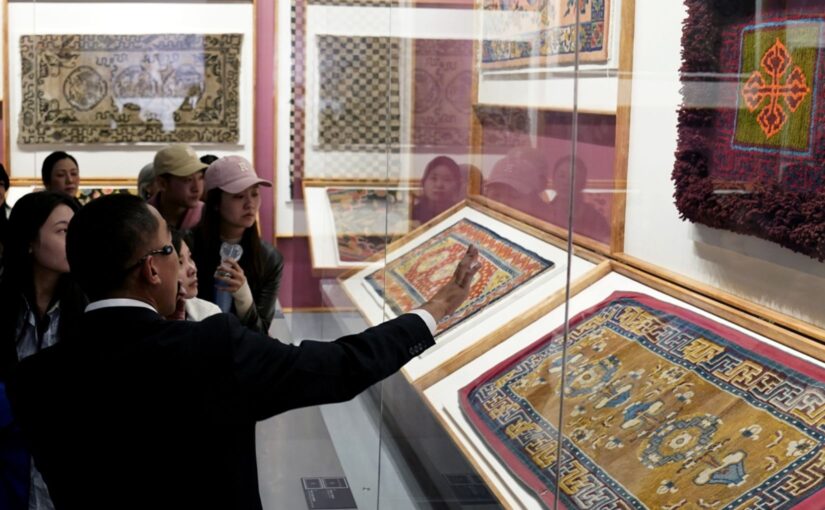 Fact and fiction in Tibet: An eyewitness account
Fact and fiction in Tibet: An eyewitness account
In the following article, which was originally published by Global Times as part of its “Truth Seen in Xizang” series, which draws on the eyewitness accounts by foreigners of their visits to China’s Xizang (Tibet) Autonomous Region, Arnold August, a Montreal-based writer and activist, and a leading member of the International Manifesto Group (IMG), reflects on his 2023 visit and notes:
“I am deeply interested in how China strives to integrate the most dynamic aspects of the religious features of culture into its thinking and actions. This applies locally to Buddhism in Xizang.”
Graphically describing the synthesis between tradition and modernity as an ancient civilisation experiences a period of rapid development, he recalls: “We see most people dressed in traditional garments, witness hundreds of Buddhist monks in their religious garb while walking and/or praying, traditional Buddhist architecture side by side with modern malls, kids rollerblading, others enjoying themselves with their families in an amusement park, or the less timid approaching our group to practice their English and satisfy their curiosity.”
Visiting the Jokhang Temple in the old part of the regional capital Lhasa, which features traditional Tibetan architecture, “what attracted my attention was that it houses the Gelug school monastery (Gelug means ‘virtuous’), the most recent of several vital schools of Tibetan Buddhism. The teaching language, of course, is Tibetan.” And the Potala Palace, which overlooks the city, “contains nearly 700 murals and 10,000 painted scrolls, as well as an impressive collection of important historical documents. If the Western-driven fable of Tibetan ‘suppression’ is true, then how can we explain China’s dedication to the history of the Xizang region?
“To claim that a culture is being ‘eradicated’ while its language is taught, its religion practiced, and its history displayed and studied is a contradiction too glaring to ignore. It raises the uncomfortable question: Who gets to define what cultural survival looks like?”
Arnold writes: “As someone born and raised in Montreal, Quebec, I have a deep appreciation for issues of language, identity and cultural preservation. This personal background made me particularly sensitive to what I observed in Xizang.”
Having described what he’d seen on the visit, he concludes: “In contrast, what is the situation in Quebec, whose distinct cultural heritage goes back to 1618? Unlike the situation for Tibetans, our music, film, journalism, novels and poetry remain just an obscure footnote to Anglo-American cultural and linguistic domination… My main message is to visit Xizang and experience the contrast between fact and fiction.”
Xizang, a region known for its breathtaking landscapes and unique cultural traditions, has long become a target of Western smear campaigns and falsehoods about China. What is the truth? In the “Truth Seen in Xizang” series, the Global Times publishes conversations with and articles from scholars and observers from around the world who have visited the region, sharing their firsthand experience of traveling to Xizang and observing the daily lives of people there. Through their insights and experiences, we aim to present an authentic perspective on the Xizang Autonomous Region. This is the seventh piece of the series.
In 2023, I had the honor of visiting China’s Xizang Autonomous Region as a delegate in the autumn cohort of scholars and journalists, alongside representatives from the Americas, Europe, and Australasia. I am deeply grateful to have been invited to visit Xizang. There are various reports from the ground to share. This is just one.
As someone born and raised in Montreal, Quebec, I have a deep appreciation for issues of language, identity and cultural preservation. This personal background made me particularly sensitive to what I observed in Xizang.
I am deeply interested in how China strives to integrate the most dynamic aspects of the religious features of culture into its thinking and actions. This applies locally to Buddhism in Xizang. However, despite my extensive education and subsequent studies on language and culture, the contrast in Xizang between US-led misinformation and the truth is so blatant that it left me positively bewildered every step of the way.
I am confronted with so much misinformation in the West regarding Xizang. This disinformation primarily centers on two issues: culture in the broad sense (including religion) and language. I did not expect the inconsistency between falsehood and reality, witnessed firsthand, to be so evident. It is so outrageous when you see it for yourself. The deceit is so outlandish in contrast to the facts that it becomes glaringly obvious.
My visit to the heart of Lhasa’s old town was a powerful reminder of China’s unique experiment in merging language and culture with modernity while fully safeguarding old traditions. You have to “see it to believe it.”
Yes, this is a popular, overworked phrase. However, when one is immersed in Lhasa, it fully applies. For example, by mingling in Lhasa with the Tibetans, we see most people dressed in traditional garments, witness hundreds of Buddhist monks in their religious garb while walking and/or praying, traditional Buddhist architecture side by side with modern malls, kids rollerblading, others enjoying themselves with their families in an amusement park, or the less timid approaching our group to practice their English and satisfy their curiosity.
There is a wealth of prominent content to explore when diving into Lhasa. For example, we visited Jokhang Temple in the old town, which features traditional Tibetan architecture. What attracted my attention was that it houses the Gelug school monastery (Gelug means “virtuous”), the most recent of several vital schools of Tibetan Buddhism. The teaching language, of course, is Tibetan.
The visit to the imposing Potala Palace, which has overlooked Lhasa, offers another perspective on Tibetan Buddhism. What impressed me most was its key role not only in religion but also in Xizang’s traditional political administration and thinking. The Palace contains nearly 700 murals and 10,000 painted scrolls, as well as an impressive collection of important historical documents. If the Western-driven fable of Tibetan “suppression” is true, then how can we explain China’s dedication to the history of the Xizang region?
The same applies to the Tibetan language. At Xizang University, established in 1985 in Lhasa, courses are mainly taught in Putonghua and Tibetan. We were told that the university had more than 20,000 students, an internationally renowned department of Tibetan studies and a majority-Tibetan student body. The university focuses on local communities and cultures. Far from being marginalized, the Tibetan language is an integral part of higher education and public life in Xizang.
The special visit to the Tibetan ancient documents research center on the Lhasa campus, which focused on the Phuri Manuscripts, was impressive. They constitute China’s most ancient and extensive collection of ancient Tibetan literature. The Phuri manuscripts were uncovered in 2002 in the rural Tibetan village of Phuri. The ancient documents offer insights into a kingdom established around the 13th and 14th centuries. The manuscripts portray the natural environment, traditional customs, social structures and history.
If the Western anti-China narrative of “cultural genocide” in Xizang had any truth to it at all, then China would need to “root out” these seeds of the Tibetan people to erase their collective memory. However, on the ground, we witnessed that the opposite is the case.
The Xizang Museum, completed in 1999, is the first large, modern museum in Xizang. It features a collection of more than 520,000 artifacts, focusing on the various dynastic periods of Tibetan history. The museum boasts numerous volumes, official documents and gifts from various emperors in history. It is widely accepted that to commit genocide against a people, the very roots of their civilization and history must be eradicated. However, under the Chinese government’s leadership, Tibetan culture has been well preserved.
When I thought we had seen it all, the best was yet to come. We visited the Tibetan Autonomous Region intangible cultural heritage preservation center. Since 2012, the central and local governments have invested a total of more than 400 million yuan ($55.7 million) in protecting Tibetan intangible cultural heritage through this center. It proved to be a highlight of the entire trip for me. How refreshing!
To claim that a culture is being “eradicated” while its language is taught, its religion practiced, and its history displayed and studied is a contradiction too glaring to ignore. It raises the uncomfortable question: Who gets to define what cultural survival looks like?
Too often, the Western gaze projects its own anxieties and strategic narratives onto others.
In contrast, what is the situation in Quebec, whose distinct cultural heritage goes back to 1618? Unlike the situation for Tibetans, our music, film, journalism, novels and poetry remain just an obscure footnote to Anglo-American cultural and linguistic domination. Despite protection efforts, the pressures of assimilation are a real concern.
By comparison, what I saw in Xizang was a proactive, well-funded and systematic commitment to heritage preservation.
In Xizang, I saw the truth – and it was thriving. My main message is to visit Xizang and experience the contrast between fact and fiction.
https://socialistchina.org/2025/08/01/f ... s-account/
******
 British Defence Secretary threatens war with China
British Defence Secretary threatens war with China
Britain’s Defence Minister, the largely and justifiably unknown John Healey, has made an extraordinary threat to go to war with China over the question of Taiwan, an island province that Britain legally recognises – not least according to the bilateral agreement concluded in 1972 between the two countries that elevated their diplomatic relations to ambassadorial level – as part of China.
Speaking on board the HMS Prince of Wales aircraft carrier, after it had docked in the north Australian port of Darwin, where it is to join the United States and other countries in the warmongering Talisman Sabre exercises largely aimed at China, Healey was asked by the right wing Telegraph newspaper, “what the UK is doing to help countries like Taiwan to prepare for potential escalation from China, Mr Healey said: ‘If we have to fight, as we have done in the past, Australia and the UK are nations that will fight together. We exercise together and by exercising together and being more ready to fight, we deter better together.’”
The HMS Prince of Wales is on a nine-month deployment to the Pacific region and is widely expected to sail through the Taiwan Strait around upcoming visits to Japan and South Korea. Already, the Royal Navy provocatively sailed the HMS Spey warship through China’s Taiwan Strait on June 18. It was the first such incident in four years.
Never one to miss out on a free trip, David Lammy, Britain’s equally preposterous Foreign Secretary, accompanied Healey. He has previously said that the UK plans to conduct more so-called “freedom of navigation operations” in the Taiwan Strait.
Further underlining the gravity of the situation, the Labour supporting Mirror newspaper noted:
“In April, Keir Starmer met the crew onboard HMS Prince of Wales during an overnight stay ahead of their voyage. The PM said the mission showed the UK’s ‘leadership on global issues and security and defence’.
“‘We all know that the world is more uncertain than it felt a few months or years before – we’re in a new era,’ Mr Starmer said at the time. ‘We are sending a clear message of strength to our adversaries, and a message of unity and purpose to our allies.’”
As with most, if not all, members of the current British government, it is difficult to fathom whether Healey’s outburst represents blood-curdling bellicosity, strategic myopia, rank ignorance and stupidity, gross irresponsibility, or just plain inexperience. However, the smart money is likely to be on any combination of all of the above.
In an editorial response, the Morning Star noted that: “British troops will be engaged in provocative manoeuvres viewed by Beijing as part of Washington’s bid to encircle it militarily. That is itself part of a wider US strategy to derail China’s rise… That is the overarching war game in which Operation Talisman Sabre takes place. Britain should have no part in it.”
China’s Global Times was more hard-hitting, noting that: “Chinese observers slammed the blatant remarks over China’s internal affair, saying it was a show of residual British colonial mentality.”
It added: “Observers also pointed out that, amid warming China-Australia relations highlighted by the Australian Prime Minister’s successful July visit to China, the British defence official’s remarks attempt to place Canberra in a difficult position. Full alignment with the UK and the US is not a wise choice.”
A spokesperson for the Chinese Embassy in London was direct and to the point:
“If the said report is true, I am sure the UK official will regret having said that. China will never allow anyone to separate Taiwan from China in any way. Nor will China allow any external forces, the UK and Australia included, to undermine our efforts for complete reunification.”
Earlier, on July 25, the spokesperson responded to Foreign Secretary Lammy and Yvette Cooper, the tinpot totalitarian Home Secretary, having issued a joint statement making unwarranted comments on the law enforcement action taken by the Hong Kong SAR police against anti-China disruptors who have fled abroad:
“Hong Kong is China’s Hong Kong, and Hong Kong affairs are purely China’s internal affairs. China urges the UK to abandon its colonial mentality, stop interfering in Hong Kong affairs, cease meddling in China’s internal affairs, stop shielding criminals, and refrain from going further down the wrong path.”
Prior to Healey’s outburst, on 25 July 2025, the Chinese Embassy in the UK held a reception celebrating the 98th anniversary of the founding of the People’s Liberation Army of China. Ambassador Zheng Zeguang pointed out in his speech that this year marks the 80th anniversary of the recovery of Taiwan. Taiwan has been an inalienable part of China’s territory since ancient times. Both the Cairo Declaration and the Potsdam Proclamation, issued by major victorious nations of WWII, including China and the UK, stated in explicit terms that Taiwan is a territory that Japan had stolen from the Chinese, and shall be restored to China. All these instruments have confirmed China’s sovereignty over Taiwan and formed an important part of the post-WWII international order.
The Ambassador further emphasised that the Chinese people and their armed forces will never allow anyone to separate Taiwan from China in any way. Nor will they allow any external forces to undermine their efforts for complete reunification. All countries having diplomatic ties with China must properly handle Taiwan-related issues, which is key to the smooth development of bilateral relations with China.
Zheng Zeguang also noted that this year marks the 80th anniversary of the victory in the Chinese People’s War of Resistance Against Japanese Aggression and the World Anti-Fascist War. More than 80 years ago, the peoples of China and the UK fought valiantly against fascist aggression on the main Eastern Front and the European battlefield, making enormous contributions to the global victory against fascism. China’s fight was the earliest to begin, and the longest-lasting. The Chinese people suffered the most significant human and material losses before ultimately defeating Japanese aggressors.
Ambassador Zheng emphasised that it should never be forgotten that China and the UK were allies and fought shoulder to shoulder during the war. That part of history has left behind many touching stories of solidarity and mutual support in the flames of war. In 1942, Chinese fishermen from Zhoushan risked their own lives under Japanese gunfire to save 384 British prisoners of war on board Lisbon Maru, which was mistakenly torpedoed by a US submarine. Also in 1942, the Chinese Expeditionary Force successfully rescued British troops besieged by the Japanese army in Myanmar. In 1938, George Hogg, a young Briton, travelled thousands of miles to China, where he established schools, aided orphaned children and gave his life for the Chinese people’s righteous cause. We should remember history, honour those fallen heroes, cherish peace and strive for a better future.
The reception was attended by nearly 300 guests.
In characteristically pugilistic terms, George Galloway responded to Healey in his MOATS (Mother of all Talk Shows) broadcast.
Denouncing his remarks as madness, George noted that Britain, a bankrupt and broken country that has given billions to the ‘thief of Kiev’ and spends millions on reconnaissance flights to facilitate the Gaza genocide, was now threatening China with war. Referring to the 1949 Amethyst Incident, George recalled that the last time Britain had ‘sailed a gunboat up the Yangzi [river]’, the Chinese had sunk it. And China is now a far more powerful country than it was 76 years ago.
Noting the contempt shown for democracy, as highlighted by the fact that Britain’s rubber stamp parliament had not even been consulted or informed, George addressed Healey: “You little runt are threatening China with war.” A man who had never heard a shot fired in anger in his miserable life was threatening a war to be waged at the expense of the British people “and with the blood of your sons and daughters.”
It might just be added that, coincidentally or otherwise, Healey spoke on the 72nd anniversary of the signing of the Armistice Agreement in Korea. During that 1950-53 conflict, British forces were soundly beaten by the Chinese People’s Volunteer Army, fighting together with their Korean allies, suffering more than 1,100 fatalities and more than 2,500 wounded. In one of the most humiliating defeats ever suffered by the British military in history, the so-called ‘Glorious Glosters’ were virtually annihilated by a Chinese army that came in like “a swollen wave…. breaking on the shore” in the words of the late Sir Anthony Farrar-Hockley who served as a captain in the battle. Of some 550 troops, only some 40 managed to escape with the rest smashing their weapons and ignominiously surrendering to the Chinese forces.
The following articles were originally published by the Morning Star and Global Times and on the website of the Chinese Embassy in London. We also embed below George Galloway’s clip from Instagram.
(Much more at link.)
https://socialistchina.org/2025/07/29/b ... ith-china/
